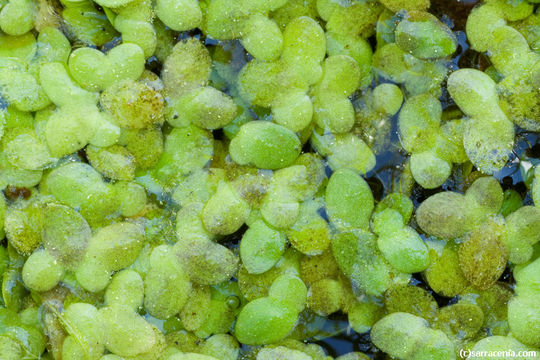Araceae
|
Araceae |
|
|
Herbs, perennial, wetland or terrestrial, occasionally emergent or floating, [often epiphytic or climbing], usually with milky or watery latex, rarely colored. Rhizomes, corms, or stolons present; rhizomes vertical or horizontal, creeping at or near surface, sometimes branched; corms underground, starchy; stolons at or near surface. Stems absent [sometimes aboveground or aerial]. Cataphylls usually present. Leaves rarely solitary, alternate or clustered; petiole rarely absent, with sheathing base; blade simple or compound [occasionally perforate], elliptic to obovate or spatulate, occasionally sagittate-cordate, larger than 1.5 cm; venation parallel or pinnate- or palmate-netted. Inflorescences spadices, each with 3--900 usually tightly grouped, sessile flowers, subtended by spathe; spathe rarely absent, persistent (sometimes only proximally) or deciduous, variously colored; spadix cylindric or ovoid, various parts occasionally naked or with sterile flowers. Flowers bisexual or unisexual, staminate and pistillate usually on same plants or functionally on different plants, staminate flowers distal to pistillate when unisexual; perianth absent or present; stamens 2--12, distinct or connate in synandria; ovaryies 1, 1--3(--many)-locular, sessile or embedded in spadix; styles 1; stigmas hemispheric, capitate, or discoid [sometimes strongly lobed]. Fruits berries, distinct or connate at maturity. Seeds 1--40(--many) per berry. Araceae are best characterized by the inflorescence, a fleshy cylindric or ovoid, unbranched spadix subtended or surrounded by a spathe. True spathes are absent in the Nearctic genus Orontium and in the Australian genus Gymnostachys. Other plant families with a compressed spadix-like inflorescence, such as Piperaceae and Cyclanthaceae, either do not have a structure equivalent to a spathe (Piperaceae) or have early-deciduous bracts (Cyclanthaceae). Plants are usually glabrous, rarely pubescent or spiny (pubescent in Pistia). Many Araceae exhibit typical monocotyledonous parallel leaf venation, but some genera have net leaf venation more typical of dicotyledons. Infrafamilial classification of the Araceae is under active study. The only classification of the family to date to utilize modern phylogenetic techniques (S. J. Mayo et al. 1997) recognizes seven subfamilies, of which three are represented in native temperate North American aroid flora: Orontioideae (Orontium, Symplocarpus, Lysichiton); Calloideae (Calla); and Aroideae (Peltandra, Arisaema, and Pistia). Acorus, a genus historically included in Araceae, is treated as a separate family in theat flora based on extensive morphologic and chemical evidence that supports its removal from Arales (M. H. Grayum 1987). The number of genera of Araceae occurring in temperate North America is low in comparison with other continents, and primitive taxa are disproportionately represented. Orontioideae and Calloideae, which include four of the seven native genera found in the flora area, are the basal clades within Araceae. Plants in these subfamilies possess the primitive states for many characteristics in Araceae and share few derived characteristics with other aroid genera (M. H. Grayum 1990). The more advanced genera native to the flora area include one genus endemic to eastern North America (Peltandra), a pantropical genus with an uncertain native distribution (Pistia), and a genus clearly Eurasian in origin (Arisaema). Araceae contain crystals of calcium oxalate, which are often cited as causing the intense irritation experienced when handling or consuming the raw plant tissue of many genera in the family. This supposition is contradicted by the fact that although irritation generally is not produced by properly cooked plants, the crystals remain after heating. Other compounds must therefore be involved with causing this reaction. Studies of Dieffenbachia demonstrated that a proteolytic enzyme, as well as other compounds, are responsible for the severe irritation caused by this plant and that raphides of calcium oxalate do not play a major role (J. Arditti and E. Rodriguez 1982). Whether irritation is caused by enzymes or crystals, that aspect of Araceae has resulted in aroid genera being included in many lists of poisonous plants (e.g., K. F. Lampe and M. A. McCann 1985; G. A. Mulligan and D. B. Munro 1990; K. D. Perkins and W. W. Payne 1978).
Plants of some cultivated species of Araceae escape and may persist or naturalize, especially in warmer climates. One of these species, Colocasia esculenta, is widespread enough to warrant full inclusion in the flora, but other introduced species of Araceae are very local in occurrence. Uncommon species represented by herbarium specimens or literature reports as escaped or persisting from cultivation are listed (table 203.1) with distinguishing characteristics and areas of occurrence.
|
|
